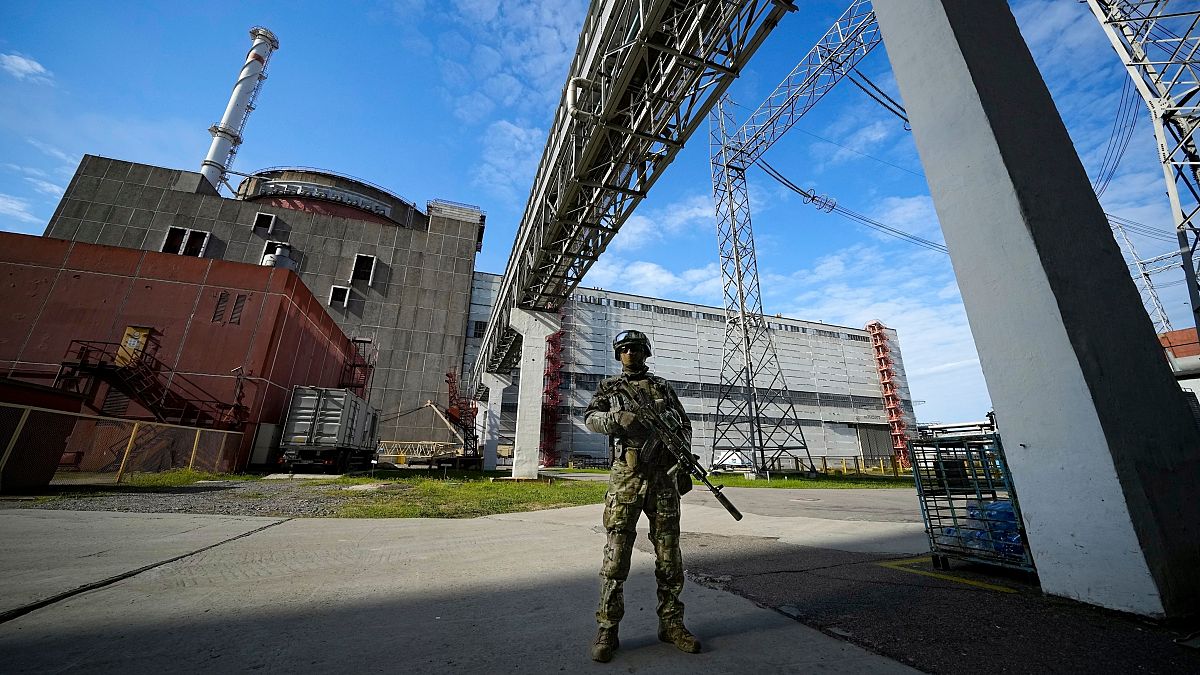IAEA calls for caution following strike on Zaporizhzhia nuclear plant
Attacks on Zaporizhzhia nuclear plant significantly increase accident risk, warns The International Atomic Energy Agency. U.N.’s atomic watchdog agency condemned a drone strike on one of six nuclear reactors at the Russian-controlled Zaporizhzhia Nuclear Power Plant in Ukraine, saying such attacks “significantly increase the risk of a major nuclear accident.” Officials at the plant said, […]


Attacks on Zaporizhzhia nuclear plant significantly increase accident risk, warns The International Atomic Energy Agency.
U.N.’s atomic watchdog agency condemned a drone strike on one of six nuclear reactors at the Russian-controlled Zaporizhzhia Nuclear Power Plant in Ukraine, saying such attacks “significantly increase the risk of a major nuclear accident.”
Officials at the plant said, “The site was attacked on Sunday by Ukrainian military drones, including a strike on the dome of the plant’s sixth power unit”. Ukraine strongly denies any involvement.
The International Atomic Energy Agency (IAEA) confirmed that the main reactor containment structures of the Zaporizhzhia Nuclear Power Plant (ZNPP) were struck by at least three direct hits.
IAEA head Rafael Grossi said it was the first such attack since November 2022, when he set out five basic principles to avoid a serious nuclear accident with radiological consequences.
“This cannot happen,” Grossi wrote on his X account on Sunday, issuing a strong plea to military decision-makers, urging them to refrain from any actions that breach the fundamental principles safeguarding nuclear facilities.
According to the plant authorities, there was no critical damage or casualties and radiation levels at the plant were normal after the strikes. Later on Sunday, however, Russian state-owned nuclear agency Rosatom said that three people were wounded in the “unprecedented series of drone attacks,” specifically when a drone hit an area close to the site’s canteen.
The Ukrainian intelligence service said that “Ukraine is not involved in any armed provocations on the territory of the illegally occupied station” and claimed it might be a “simulated” strike from Russian side.
The IAEA confirmed the physical impact of drone attacks at the plant, including at one of its six reactors. One casualty was reported, it said.
“Damage at unit 6 has not compromised nuclear safety, but this is a serious incident with potential to undermine integrity of the reactor’s containment system” it added.
The power plant has been caught in the crossfire since Moscow sent troops into Ukraine in 2022 and seized the facility shortly after. The IAEA has repeatedly expressed alarm about the nuclear power plant, Europe’s largest, amid fears of a potential nuclear catastrophe.
Both Ukraine and Russia have regularly accused the other of attacking the plant, which is still close to the front lines.
The plant’s six reactors have been shut down for months, but it still needs power and qualified staff to operate crucial cooling systems and other safety features.
More casualties reported
Three people were killed in the front-line town of Huliaipole, located in Ukraine’s partly occupied southeastern Zaporizhzhia region after their house was struck by a Russian projectile on Sunday, local authorities reported. Later the same day, another round of shelling in Huliaipole left two people injured.
Separately, three people were wounded in Russian shelling in Ukraine’s northeast Kharkiv region, according to regional Governor Oleh Syniehubov.
In Russia, a girl died and four other people were wounded when the debris of a downed Ukrainian drone fell on a car carrying a family of six people in Russia’s Belgorod region bordering Ukraine, according to local officials.














